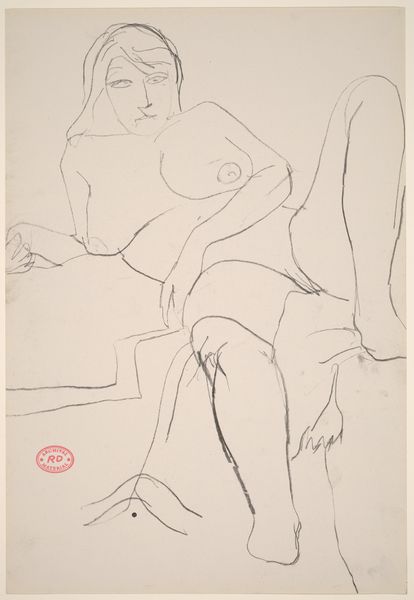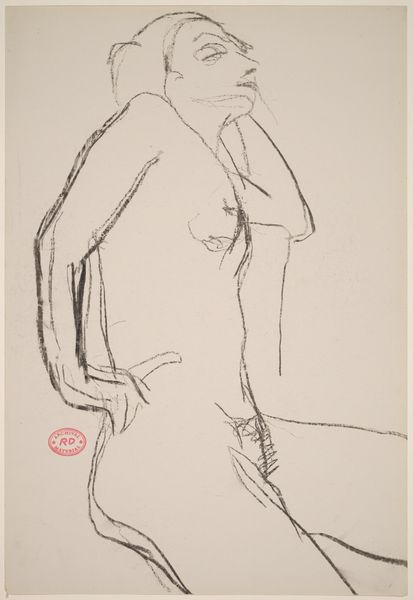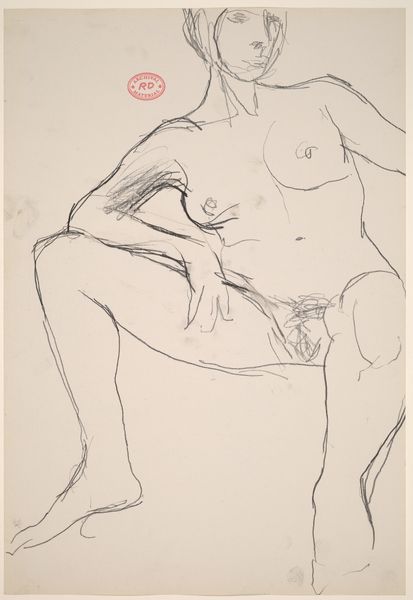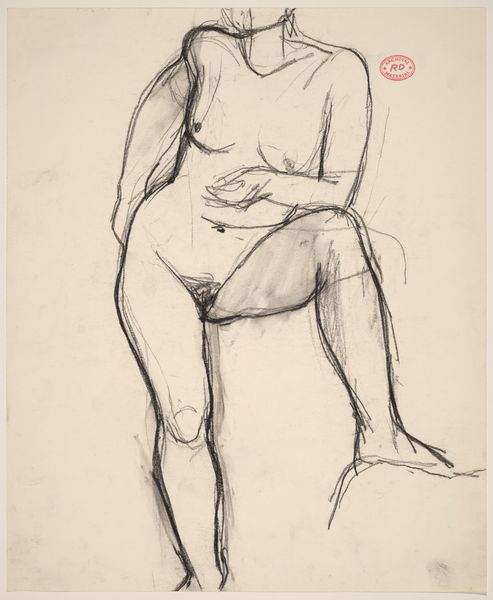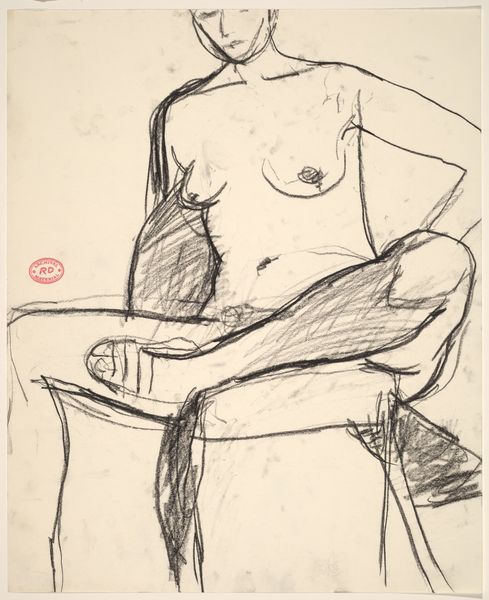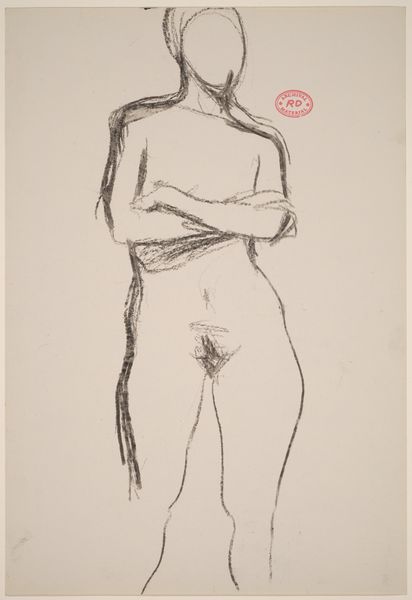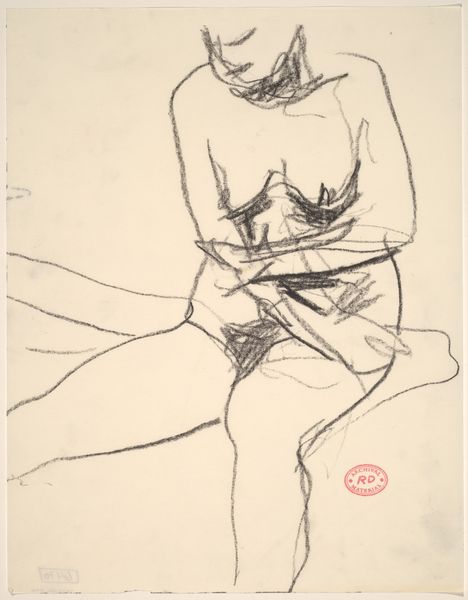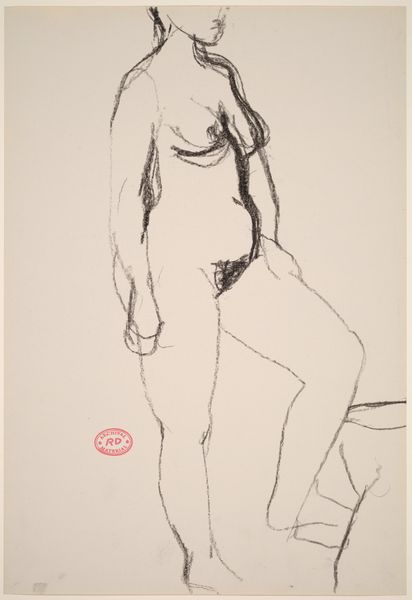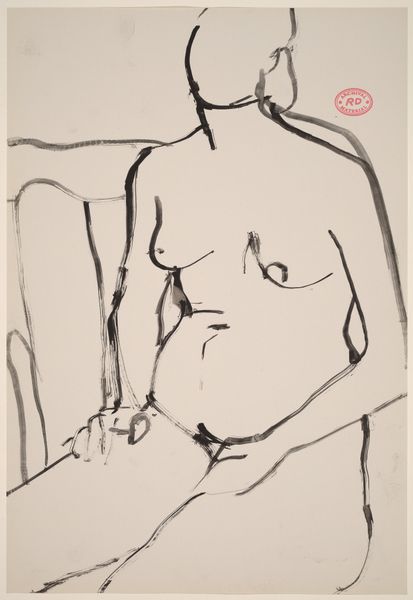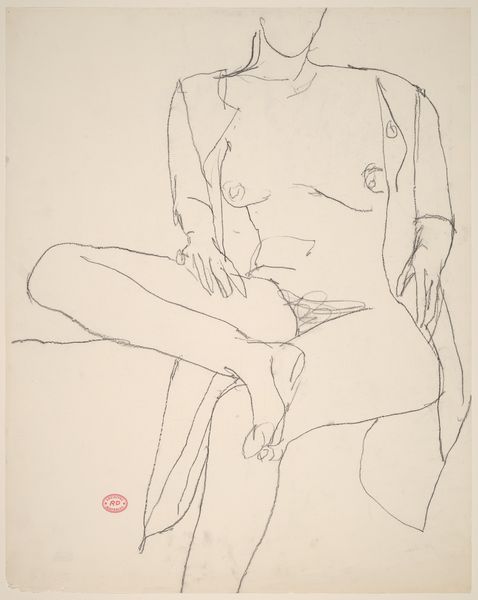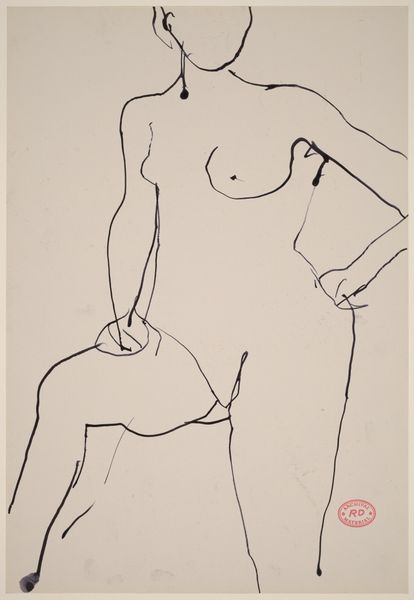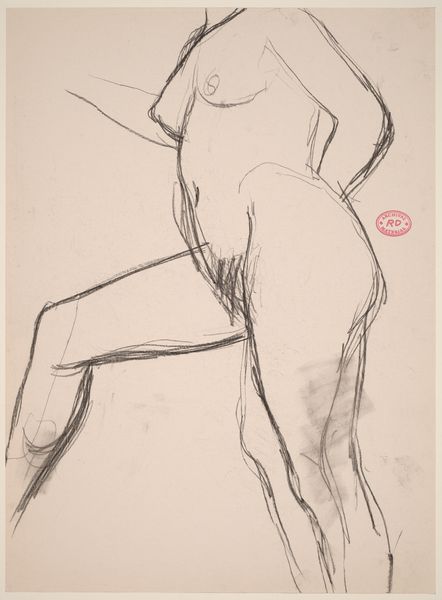![Untitled [seated female nude with her elbows raised behind her] by Richard Diebenkorn](/_next/image?url=https%3A%2F%2Fd2w8kbdekdi1gv.cloudfront.net%2FeyJidWNrZXQiOiAiYXJ0ZXJhLWltYWdlcy1idWNrZXQiLCAia2V5IjogImFydHdvcmtzLzk5MjUxYTlhLWQxODAtNGQ1My1hNGE4LTNkMTYxNTYxODQ5OS85OTI1MWE5YS1kMTgwLTRkNTMtYTRhOC0zZDE2MTU2MTg0OTlfZnVsbC5qcGciLCAiZWRpdHMiOiB7InJlc2l6ZSI6IHsid2lkdGgiOiAxOTIwLCAiaGVpZ2h0IjogMTkyMCwgImZpdCI6ICJpbnNpZGUifX19&w=3840&q=75)
Untitled [seated female nude with her elbows raised behind her] 1955 - 1967
0:00
0:00
drawing, ink
#
drawing
#
ink drawing
#
pen sketch
#
figuration
#
bay-area-figurative-movement
#
ink
#
line
#
nude
Dimensions: overall: 40.6 x 27.8 cm (16 x 10 15/16 in.)
Copyright: National Gallery of Art: CC0 1.0
Curator: Before us, we have an ink drawing by Richard Diebenkorn, created sometime between 1955 and 1967. It is an untitled piece depicting a seated female nude, her elbows raised behind her. Editor: Immediately, I'm struck by the spareness of the line, its stark contrast on the white ground, and how powerfully the artist has suggested volume and weight with so little information. It feels unfinished, but somehow complete. Curator: Indeed, Diebenkorn's masterful use of line in this sketch directs our attention to the formal arrangement. Notice how each stroke appears deliberate, creating a scaffolding that simultaneously defines the figure and activates the surrounding space. The lack of shading and facial detail encourages a focus on pure form. Editor: And think about the physical act, the hand holding the pen, the ink flowing, the pressure applied to paper. Ink lends itself to a specific kind of gesture, one that's immediate and exposes any wobble or inconsistency. It's unforgiving. Diebenkorn makes the process legible, doesn't obscure the labor. This wasn't made to be hyperrealistic. Curator: Exactly. The economical use of line is essential here. It eliminates unnecessary detail, drawing our gaze toward the rhythmic interplay between positive and negative space. The composition itself suggests dynamism, preventing our eye from resting on any one area for too long. The artist uses shape to communicate depth and motion through what we are looking at. Editor: Think of the material context as well. Paper, ink, artist’s tools; not precious materials, but readily available and reproducible. The act of drawing here challenges hierarchies. Is this preparatory? A finished work? I believe he deliberately blurs those categories and values the artistic work and mark making above all else. Curator: Interesting point. Through a formalist lens, the drawing functions as an exercise in abstracting the human form, prioritizing shape and line over realistic representation, to build an artistic composition. But seeing the process shows that line becomes meaning here and blurs those definitions. Editor: So we see a convergence; form following process. This process is laid bare and is an example of how meaning and production blur within a tangible form, a new and exciting thing for both of us.
Comments
No comments
Be the first to comment and join the conversation on the ultimate creative platform.
